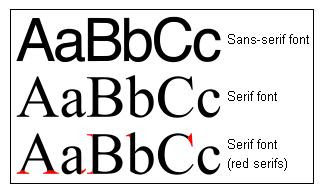This websites provides a details guidance on usability testing with participants with disabilities.
- Preparing for Usability Testing
- Conducting Usability Testing
- Reporting Usability Testing
- Checklist for Usability Testing
- Recruiting Screener
Each parts cover in deeply but in a simple and precisely.
These five parts are important in Usability Testing.
The interesting parts is the Recruiting Screener , it provide a list of question need to be consider in recruiting the users for testing. It helps to guide the developer to set the recruitment guidelines.
Usability Testing Template (PDF) , this PDF file is a detail usability testing template,




This template is simple, especially the questionnaire for the test users, It really simple and precise for his product, we can learn from it to provide a simple questionnaire to get the users opinions.
Reference:
Usability Testing
Usability Testing Template (PDF)



















